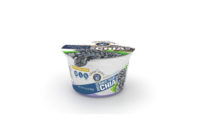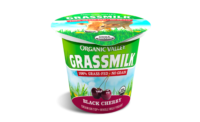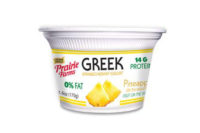
Whenever I travel outside of the United States, I always look forward to visiting local grocery stores to see their selection of dairy products. You will find some of the most unique flavors, textures, and forms of cultured products, drinking milks, cheese snacks, and more by visiting other countries.
Since the U.S. is part of the world, we get a first prize for setting the standard for high protein dairy products such as ultrafiltered milks and dairy protein drinks with protein levels of 30 g/340 ml serving (9% protein), yogurts with 15 g/170g serving (9% protein), and frozen desserts with 6 g/87 g serving (7% protein). These products have not only stuck around but have contributed to growth in their respective categories.
Since I haven’t traveled around the world like I used to before the pandemic, attending the International Dairy Federation (IDF) World Dairy Summit in October gave me a sneak peak at some new dairy products from around the world. The Summit had attendees from 52 different countries featuring presentations from dairy farmers and manufacturers from China, India, Kenya, Oceania, Japan, U.S., and many different European countries.
Utilizing new technology
Several products showcased new technologies by Yili, a company based in Inner Mongolia, China. One product was a shelf-stable, ambient temperature drinking yogurt with added LGG probiotics. This product was UHT (ultra-high temperature) pasteurized and aseptically packaged which is not a technology that the U.S. uses for drinking yogurt because we have the cold chain in place to ship and refrigerate pasteurized drinking yogurt.
The unique technology used in this product involved the added probiotics. The patented technology allows for aseptic addition of the probiotics after the yogurt is UHT pasteurized. Yili sampled this drinking yogurt at its booth and also showed single servings of fruit flavored, sweet processed cheese for kids in cartoon character shaped packages.
Another technology, used by Nestlé in Switzerland, was a fluid milk product that used an enzyme to hydrolyze the lactose in the milk and converted the galactose into galacto-oligosaccharides, which also reduced the overall sugar content. The specialty milk came with a high fiber, reduced sugar claim.
Adding flavor
Reminiscing about my travels, I have had yogurt with added corn in Thailand, Chinese date yogurt in China, and aloe vera yogurt in Japan. It might be difficult to sell these in the U.S., but I actually liked them because they were different than our flavors. Yogurts are not the only dairy products with unique flavors that you will find in other countries. How about a mango melon cream cheese from South Korea, or cream cheese with chili and ginger from Denmark?
Pistachio quark from Belgium or a lingonberry caramel quark from Finland sounds especially tasty. Quark is considered a fresh acid-set cheese. It is common in Europe, high in protein (5% to 9%), available with varying levels of fat, and consumed like yogurt. Like Greek yogurt, quark is used in a lot of bakery products, sauces, condiments, and desserts. Unlike Greek yogurt, quark has not yet caught on as a new product trend here in the U.S. One thing is certain, the clean flavor and versatility of milk, which is transformed into the thousands of types of dairy products from around the world, provides enjoyment and some of the best nutrition to our diets.
Improving sustainability
Despite the nutrient density and versatility that dairy products provide, some consumers are turning away from dairy because of sustainability concerns. Not surprisingly, sustainability was a major focus of many presentations at the IDF World Dairy Summit. Farmers and manufacturers from around the world discussed the improvements that they have made to support their soil and cow welfare, while also conserving water and producing energy by repurposing waste.
These initiatives have been ongoing for decades and just in the 10 years from 2007 to 2017 in the U.S., the environmental impact of producing a gallon of milk used 30% less water, 21% less land, and 19% less carbon. (Dairy And The Environment | U.S. Dairy (usdairy.com). The U.S. Dairy Net Zero Initiative has goals of reaching greenhouse gas (GHG) neutrality, optimizing water use while maximizing recycling, and improving water quality by optimizing utilization of manure and nutrients.
Our younger generations don’t have an understanding of where their food comes from and their social media has told them that eating plants is better for the environment. The dairy industry around the world needs to do a better job of communicating that dairy products can provide sustainable nutrition for the generations to come.




